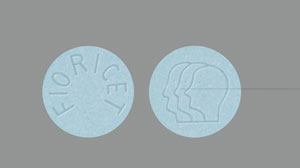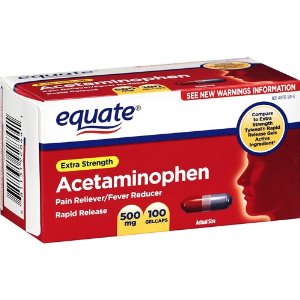 Fiorinal and Fioricet are medicines for tension-type headaches.
Fiorinal and Fioricet are medicines for tension-type headaches.
Fiorinal contains aspirin and Fioricet contains acetaminophen. They both contain butalbital and caffeine.
Caffeine is sometimes also added to this combination. Butalbital, a barbiturate sedative, is habit-forming.
Fioricet contains: 325 mg of acetaminophen (APAP), 50 mg of butalbital, and 40 mg of caffeine.
New capsule reformulation of Fioricet contains: 300 mg of acetaminophen (APAP), 50 mg of butalbital, and 40 mg of caffeine.
Fiorinal contains: 325 mg of aspirin (ASA), 50 mg of butalbital, and 40 mg of caffeine.
The only difference between these two is the aspirin in Fiorinal vs acetaminophen in Fioricet.
The interesting thing is that Fiorinal is a scheduled class III substance, while Fioricet has a non-scheduled status. It seems really strange because both combinations contain equal amount of the controlled substance butalbital.
These medications should not be used on a daily basis because dependency on them can develop. Regular use, more than 2 days per week, can cause rebound headache, which may not respond to usually effective acute and preventive treatments.
Some patients are wondering why fioricet is not controlled but fiorinal is controlled.
The reasons is that Fiorinal contains aspirin but fioricet only contains non-aspirin pain killer and barbiturate butalbital. The potential for abuse is decreased if a sufficient amount of a non-controlled substance (e.g., aspirin or acetaminophenn) is added.
The ratio required for exemption is 70 mg of acetaminophen to 15 mg of butalbital. In contrast, the ratio of aspirin to butalbital is 188 mg to 15 mg. The acetaminophen to butalbital ratio is approximately 97 mg to 15 mg in Fioricet, thus it is exempt from being controlled.
Another reasons is that drug abusers can easily perform an “acid wash” to remove the aspirin (acetylsalicylic acid) component in Fiorinal but It is much more difficult to remove the acetaminophen component in Fioricet.
Exceptions from the scheduling have been made if the drug meets the requirements of section 811(g) (3) (A) of the Controlled Substances Act. The exemption requires that one of the active ingredients be a non-narcotic controlled substance and one of the others be a non-scheduled compound. The potential for abuse is decreased if a sufficient amount of a non-controlled substance (e.g., aspirin or acetaminophen) is added.
According to the FDA, the issue boils down to a specific ratio of aspirin or acetaminophen to butalbital. Fiorinal® is required to have at least 188 mg of aspirin for every 15 mg of butalbital (188:15) to meet CSA exemption. The ratio needed for Fioricet® is 70 mg of acetaminophen for every 15 mg of butalbital (70:15). These ratios were based on what the FDA believed were adequate amounts of nonnarcotic to reduce the abuse potential of butalbital.
The acetaminophen to butalbital ratio in new and old formulation of Fioricet:
Old formulation:
325 mg Acetaminophen / 50 mg Butalbital
97 mg Acetaminophen to 15 mg Butalbital (To be exempt, ration requires at least 70 mg or more Acetaminophen for every 15 mg Butalbital included in formulation.
New Formulation:
300 mg Acetaminophen / 50 mg Butalbital
90 mg Acetaminophen to 15 mg Butalbital (To be exempt, ration requires at least 70 mg or more Acetaminophen for every 15 mg Butalbital included in formulation.
So both new and old formulation of Fioricet by law shall be exempt from controlled substance requirements.
The aspirin to butalbital ratio in Fiorinal:
325 mg Aspirin / 50 mg Butalbital
97 mg Aspirin to 15 mg Butalbital (To be exempt, ration requires at least 188 mg or more Aspirin for every 15 mg Butalbital included in formulation.
Therefore Fiorinal is classified as a Schedule III substance.
Citation:
1. Section 811(g)(3)(A) Controlled Substances Act
2. http://www.deadiversion.usdoj.gov/schedules/exempt/exempt_rx_list.pdf
3. http://www.communitymedical.org/sites/default/files/library/files/2014_04_physicians_edition.pdf
